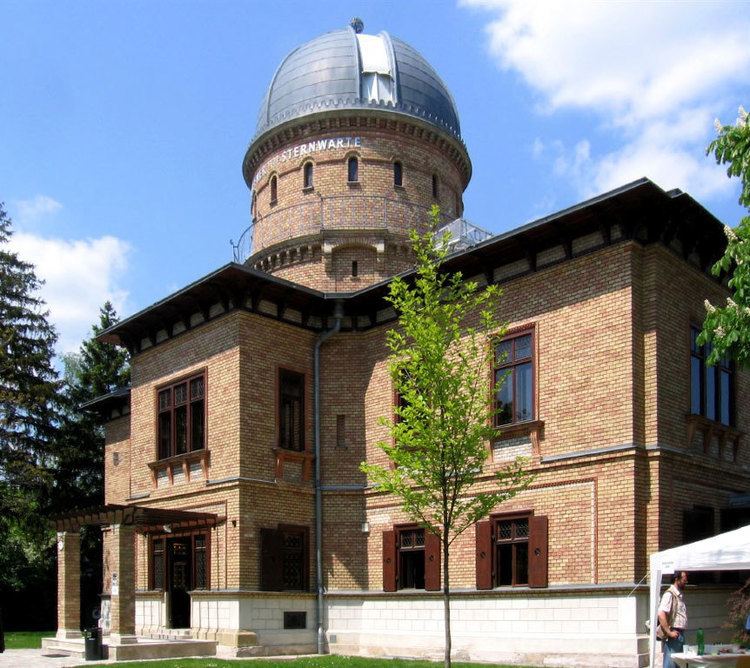Phone +43 1 89174150123 | ||
 | ||
Address Johann-Staud-Straße 10, 1160 Wien, Austria Hours Closed today SaturdayClosedSundayClosedMonday8–9PMTuesdayClosedWednesday8–9PMThursday8–9PMFridayClosed Similar Zeiss Planetarium Vienna, Urania - Vienna, Schloss Wilhelminenberg, Palais Lobkowitz - Vienna, Palais Pallavicini | ||
The Kuffner observatory is one of two telescope-equipped public astronomical observatories situated in Austria's capital, Vienna. It is situated in the West of the city's Ottakring district, on the slope of the Gallitzinberg at 302 m altitude. Originally a private research institution, it was converted into an educational astronomy facility after World War II as buildings and city lights had encroached to a degree that severely hampered scientific nightsky observations. Today the main tasks of the observatory consist in public education on astronomy, operating and preserving the historical equipment, and minor projects in scientific astronomy.
Contents
Scientific achievements
The Kuffner observatory was constructed from 1884-1886 according to plans of Franz Ritter von Neumann. Originally it was a private research institution for which the philanthropic head of the Kuffner brewery dynasty from Lundenburg, Moriz von Kuffner financed the construction (including extensions built in 1889-1890), the equipment, and also the operation.
During the years leading up to World War I the observatory became one of the most important astronomy sites in the Austro-Hungarian monarchy, and established a considerable international reputation. Carl Wilhelm Wirtz, Leo Anton Karl de Ball, Samuel Oppenheim, and most notably Karl Schwarzschild spent parts of their careers here. During his assistantship at the Kuffner observatory, Schwarzschild – who would later become the “grandfather of black hole theory”—developed a formula that allowed to calculate the relation between the intensity of faint astronomical light sources, the exposure time, and the degree of opacity created in photographic emulsions.
Demise and reactivation
The financial situation of the Kuffner dynasty deteriorated with the onset of World War I. The observatory was closed in 1915 and, after several failed attempts, was reopened only in 1947. The Vienna city council acquired the facility in 1987, and initiated a total refurbishment that lasted from 1989 to 1995 when it was reopened to the public under the direction of the Folk high school Ottakring as an institution for public education, a Volkssternwarte.
Historical equipment
The Kuffner observatory maintains four major pieces of observation equipment from the late 19th century in working condition: the 270 mm refracting telescope, built in 1884, to which an 156 mm astrograph (now used with modern CCD imagers) was added in 1890; the 132 mm meridian circle, the largest meridian passage instrument of the Austro-Hungarian Empire; its ancillary vertical circle instrument, one of the few that still exist at European observatories; and the 217/3000 mm heliometer, the largest of its type that was ever built.
Current research
Besides its function as a scientific museum and its ongoing mission concerning popularization of astronomy, the Kuffner observatory serves as the Austrian national host for the INES (International Ultraviolet Explorer New Extracted Spectra) database. It hosted the Meeting on Asteroids and Comets in Europe (MACE) in 2006, and the DARKSKY European Symposium, an event of the Dark-sky movement, in 2008.
